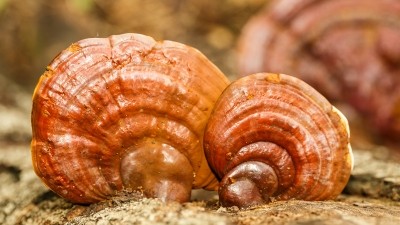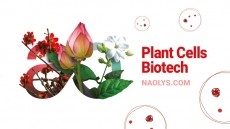Regenerative remedies: Thyme, curcumin among naturals that show promise for wound healing – Review
![Thyme, honey, aloe vera, curcumin, and St. John's wort hold potential in wound healing applications. [Getty Images]](/var/wrbm_gb_food_pharma/storage/images/_aliases/wrbm_large/publications/cosmetics/cosmeticsdesign-asia.com/headlines/formulation-science/thyme-curcumin-among-naturals-that-show-promise-for-wound-healing-review/16429148-1-eng-GB/Thyme-curcumin-among-naturals-that-show-promise-for-wound-healing-Review.jpg)
According to the study, more than 3,000 types of dressings are available but “no superior product exists to repair chronic wounds”, such as diabetic wounds, which can be challenging to heal.
“As a result, designing a dressing material that addresses the key interfering variables in the natural healing process will benefit patients and wound care practitioners.”
Today, Biopolymer materials are increasingly being explored and utilised in the field of wound dressings due to their desirable properties and potential benefits.
Some commonly used biopolymers for wound dressings include cellulose, alginate, hyaluronic acid, collagen, and chitosan.
However, the team believes these materials “can be enhanced to better meet the demands” in wound healing care.
It proposed that traditional ingredients could be incorporated into the bio-based polymers to enhance their wound-healing properties.
“Most traditional medical methods across the world employ medicinal herbs in the treatment of acute and chronic wounds. Several plants in the world’s tropical and subtropical regions have been evaluated for wound healing ability based on this. Yet, there are numerous medicinal plants that need to be evaluated in the research for better, more effective, and less expensive wound healing agents.”
The review explored a few examples of traditional ingredients that have been historically associated with wound healing, including thyme, honey, aloe vera, curcumin, and St. John's wort.
Evaluations
In particular, the research highlighted the potential of curcumin.
It is effective against Staphylococcus aureus (S. aureus) and Escherichia coli (E. Coli) and according to the research, curcumin has an antioxidant effect that scavenges free radicals. In the proliferation phase, it also promotes granular epithelisation.
“We concluded that curcumin-loaded composites possess several biological activities like anti-inflammatory action, antioxidant activity, antibacterial activity, excellent biocompatibility and tissue regeneration.”
Thyme, which contains the naturally occurring compound thymol, is known to have broad-spectrum antimicrobial activity. The review cited a study which used the disc diffusion method and proved the effectiveness of thyme oil’s antibacterial properties against bacteria.
Honey was also deemed to be a good choice for wound healing, given its ability to retain moisture and antibacterial properties.
It has been found to inhibit the growth of some bacteria, including S. aureus and E.coli. Previous research has found that increasing the concentration of honey can increase cellulose hydrogel’s capacity to retain moisture.
Another common traditional ingredient that was researched was aloe vera. Aloe vera is typically applied topically to treat lesions and has anti-inflammatory, antibacterial, and antiseptic properties.
“Aloe vera promotes wound healing through various processes, including maintaining wound moisture, enhancing epithelial cell migration, accelerating collagen maturation, and reducing inflammation.”
Based on a study that chitosan and aloe vera gel formulations, the researchers suggested that aloe vera could be used as vaginal gels.
Lastly, the review highlighted St. John's as a promising biomaterial for wound healing applications. I
The research said it has long been used as a home remedy for thermal burns, skin problems, cuts, and wounds in many cultures as conventional medicine.
St. John’s wort oil may be used to aid tissue repair, and in vivo and clinical investigations have demonstrated its therapeutic benefits on wound healing.
Source: Biotechnology Journal
https://doi.org/10.1002/biot.202300006
Bio-based polymers containing traditional medicinal fillers for wound healing applications – An evaluation of neoteric development and future perspectives
Hema S et al.


![A leading supplier of ashwagandha is eyeing untapped potential in the beauty and personal care market where it believes it can satiate demands for high-performing natural ingredients in both skin and hair care. [Getty Images]](/var/wrbm_gb_food_pharma/storage/images/_aliases/wrbm_medium/publications/cosmetics/cosmeticsdesign-asia.com/headlines/business-financial/ashwagandha-in-cosmetics-supplier-eyes-untapped-potential-in-skin-and-hair-care/16308229-1-eng-GB/Ashwagandha-in-cosmetics-Supplier-eyes-untapped-potential-in-skin-and-hair-care.jpg)
![Donkey milk has cosmetic potential for its ability to inhibit melanin synthesis. [Getty Images]](/var/wrbm_gb_food_pharma/storage/images/_aliases/wrbm_medium/publications/cosmetics/cosmeticsdesign-asia.com/headlines/formulation-science/donkey-milk-shows-promise-as-anti-pigmentation-skin-care-ingredient-china-study/16329430-1-eng-GB/Donkey-milk-shows-promise-as-anti-pigmentation-skin-care-ingredient-China-study.jpg)





![Latest developments from the South Korean beauty market. [Getty Images]](/var/wrbm_gb_food_pharma/storage/images/_aliases/wrbm_tiny/publications/cosmetics/cosmeticsdesign-asia.com/headlines/brand-innovation/korea-focus-able-c-c-kolmar-and-more-in-this-k-beauty-round-up/17357973-1-eng-GB/Korea-focus-Able-C-C-Kolmar-and-more-in-this-K-beauty-round-up.jpg)

![Able C&C has furthered its partnership with Japanese discount chain Daiso with new makeup launch. [A'pieu]](/var/wrbm_gb_food_pharma/storage/images/_aliases/wrbm_tiny/publications/cosmetics/cosmeticsdesign-asia.com/headlines/brand-innovation/a-pieu-and-daiso-launch-exclusive-2-makeup-line/17339117-1-eng-GB/A-pieu-and-Daiso-launch-exclusive-2-makeup-line.jpg)
![Down Under Enterprises is setting sights on the Asian market as environmental sustainability and traceability become increasingly important. [Getty Images]](/var/wrbm_gb_food_pharma/storage/images/_aliases/wrbm_tiny/publications/cosmetics/cosmeticsdesign-asia.com/headlines/market-trends/down-under-enterprises-shifts-focus-to-china-as-environmental-sustainability-traceability-come-into-the-spotlight/17304932-1-eng-GB/Down-Under-Enterprises-shifts-focus-to-China-as-environmental-sustainability-traceability-come-into-the-spotlight.jpg)
![News updates from Shiseido, Dr.Ci:Labo, Sephora, and more. [Shiseido]](/var/wrbm_gb_food_pharma/storage/images/_aliases/wrbm_tiny/publications/cosmetics/cosmeticsdesign-asia.com/headlines/brand-innovation/updates-from-shiseido-dr.ci-labo-sephora-and-more/17334944-1-eng-GB/Updates-from-Shiseido-Dr.Ci-Labo-Sephora-and-more.jpg)

![Clariant has underscored the importance of localisation strategies and distribution capabilities in China with beauty trends evolving at a rapid pace. [Getty Images]](/var/wrbm_gb_food_pharma/storage/images/_aliases/wrbm_tiny/publications/cosmetics/cosmeticsdesign-asia.com/article/2024/04/16/clariant-emphasises-importance-of-localisation-in-the-era-of-viral-trends/17327969-1-eng-GB/Clariant-emphasises-importance-of-localisation-in-the-era-of-viral-trends.jpg)



